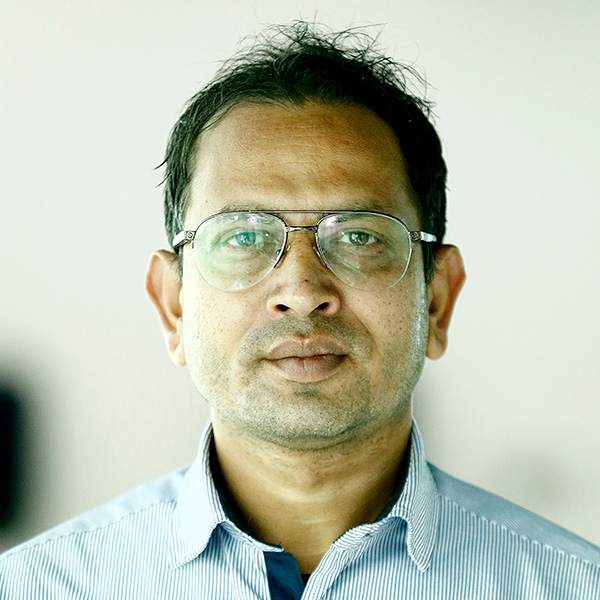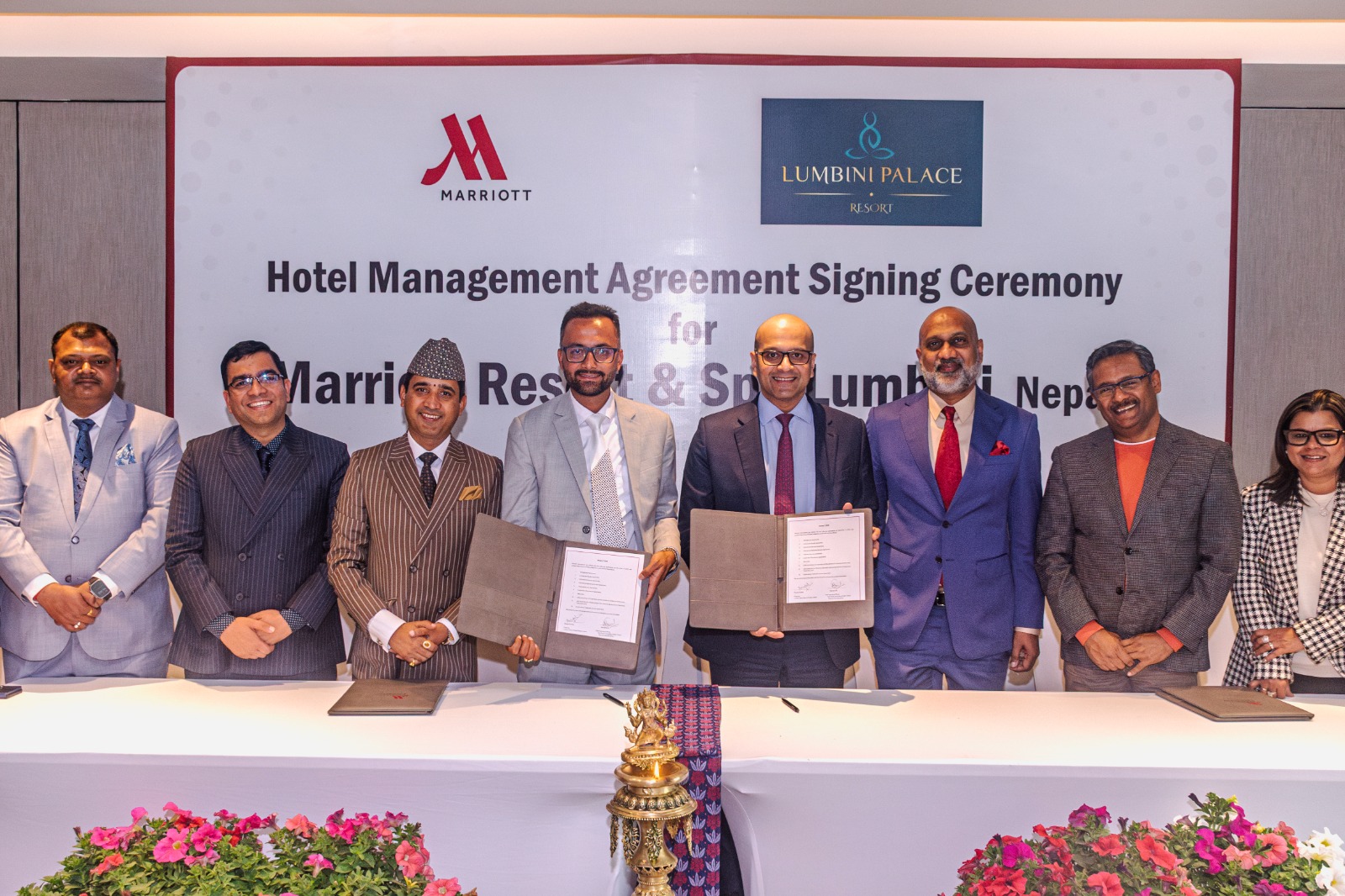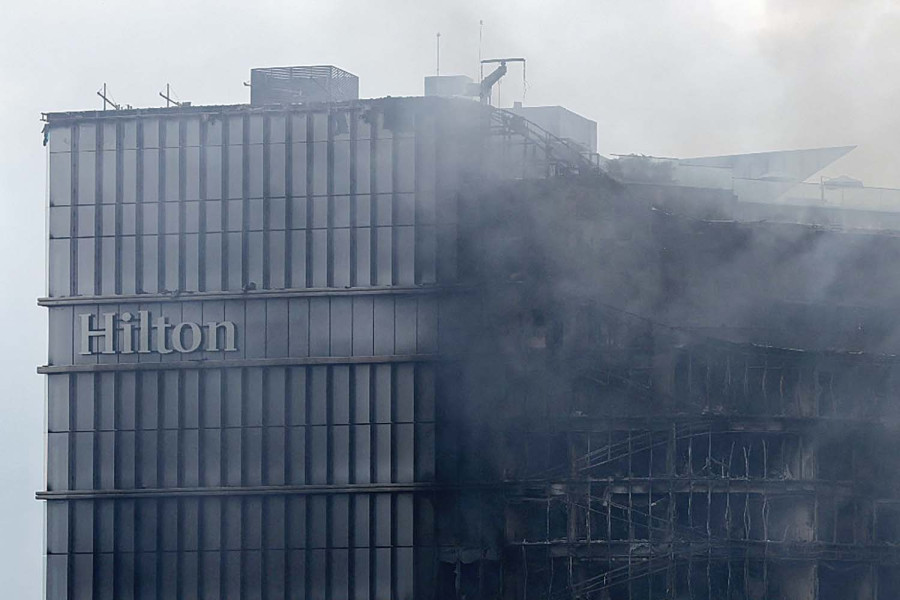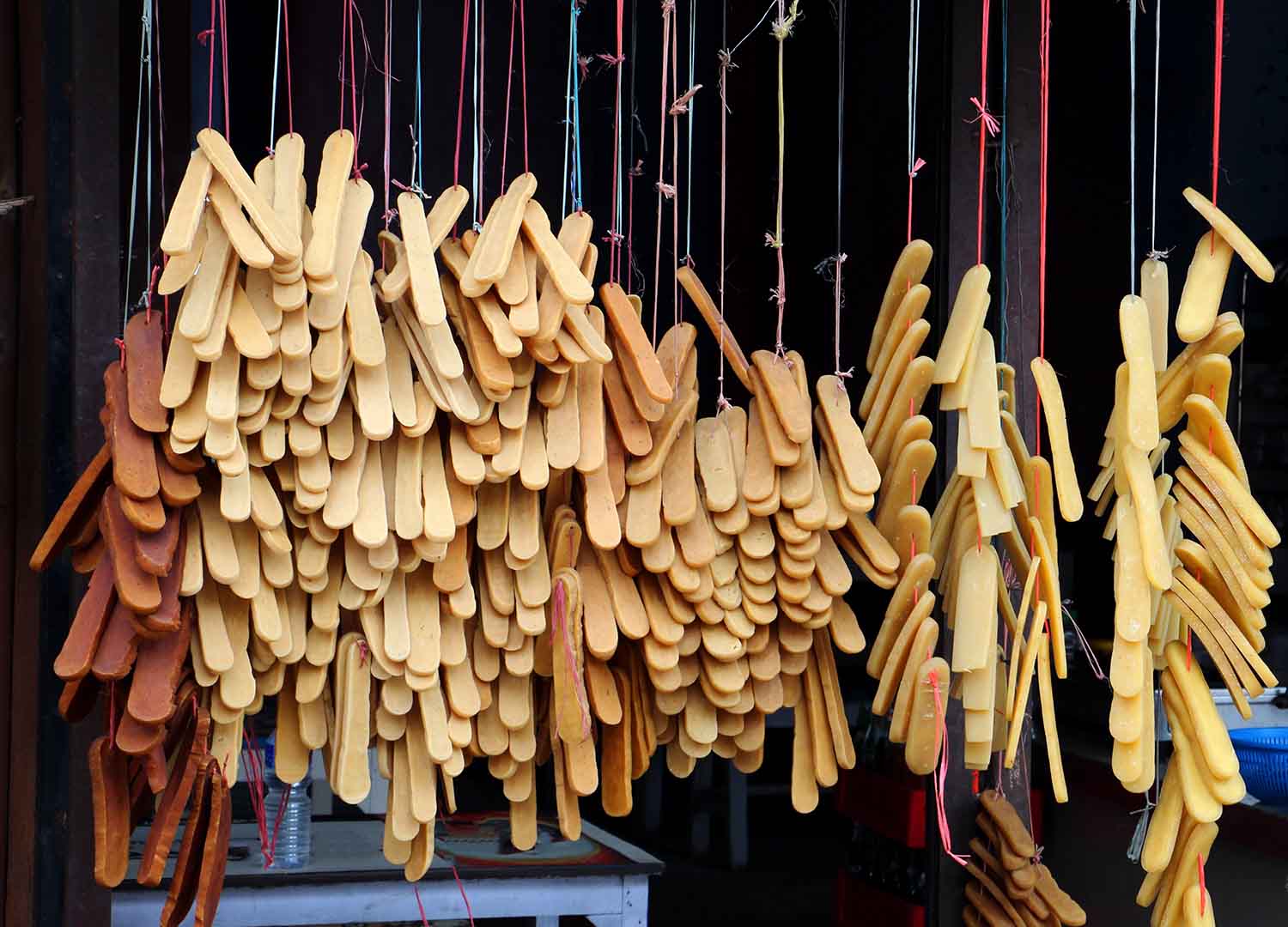Money
How induction stoves are transforming life in Madhesh
A clean cooking project is helping women replace smoky firewood stoves with induction cooktops, improving health, saving time, and cutting costs.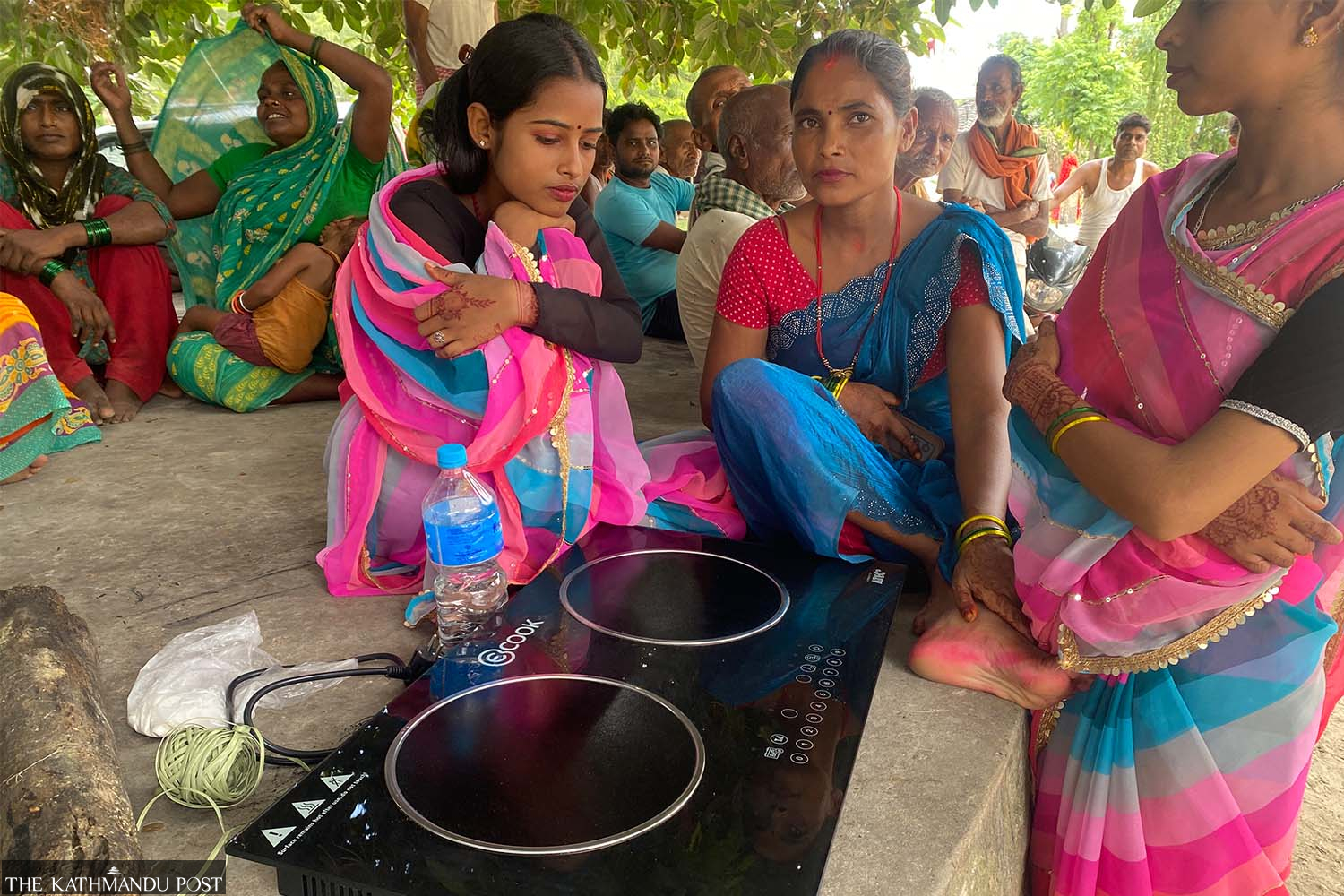
Sangam Prasain
On a scorching afternoon at Birendra Bazar in ward 3 of Ganeshman Charnath Municipality in Dhanusha, a modest mud house with a tiled roof stands quietly in the heat. Inside its two small rooms, 28-year-old Archana Kumari Mahara, a mother of two, steps into her kitchen. She sets a pan on her shiny new induction stove, plugs it in, and the aroma of sizzling potato snacks fills the air within minutes.
“Here you go. I can cook in a few minutes nowadays,” Mahara says with a smile, handing over the plate.
For her, the stove is more than just an appliance. It is liberation.
She no longer has to kneel in front of a smoky mud stove, coughing through clouds of fumes while arranging firewood. For years, like millions of Nepali women, she had inhaled the dangerous smoke of burning wood, unaware it was slowly stealing years from her life.
She switched to induction cooking three months ago, and her daily routines transformed.
“Cooking is fast. It’s really fast,” she says. “For twelve years—since before marriage and after—I spent mornings collecting firewood and then hours cooking meals and fodder. But now, with induction, my life has changed.”
At first, she was fearful. Neighbours had warned her that the stove might give her electric shock. “But that was not true,” Mahara says. “Now, I even use induction with the fan switched on, which would not be possible when I cooked on fire because the fan would scatter the flames.”
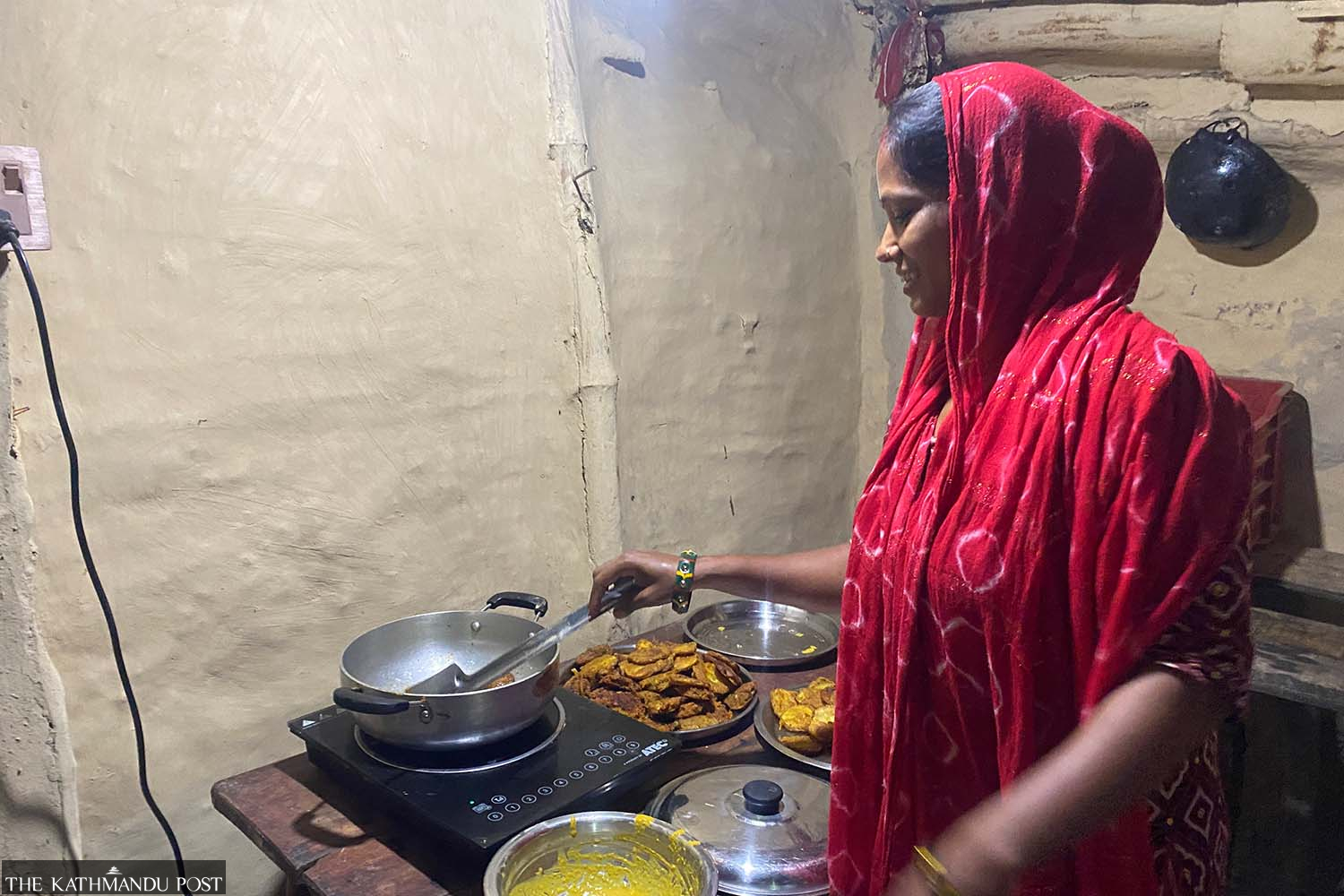
Wet wood produced clouds of smoke that blackened her kitchen walls and stung her eyes. Archana, too, remembers her children being late for school because food wasn’t ready on time. “Sometimes, houses even caught fire,” she says. “Nighttime was even difficult.”
Still, piles of firewood remain stacked in a corner of her courtyard. Electricity is unreliable, and wood remains a reluctant backup for many households like hers.
Just across the way, 69-year-old Thali Maya Tamang watches her neighbours cook with ease. She regrets not saying yes when surveyors once came to jot down names to distribute induction stoves. “I initially rejected it,” she admits. “A survey team came two years ago, but I was uninterested.”
Now she envies her neighbours. “They cook fast, and it’s cheaper than gas. The bill is less than an LPG cylinder,” she says. “I want one at any cost.”
Amida Khatun, 50, was the first woman in Birendra Bazar to embrace the induction stove. In February last year, she bid farewell to firewood. But her journey had not been simple.
“I was too afraid in the beginning. Neighbours said it would spark and shock me,” she recalls. She relied on an infrared stove for years to escape smoke, but it was costly and risky. Infrared stoves heat the surface, consuming more electricity and causing accidental burns.
“When my health started to suffer from firewood smoke, I switched. Now, with induction, I save half the money compared to LPG. It’s around Rs700-800 a month,” Khatun explains. An LPG cylinder costs Rs1,900 and barely lasts 25 days for her six-member family.
Madhesh province is now aggressively pushing households away from firewood. The reasons are clear. Burning wood is disastrous for both health and the climate. It releases black carbon, methane, and other short-lived pollutants that heat the atmosphere while also damaging lungs, eyes, and reproductive health.
Firewood still dominates Nepali kitchens.
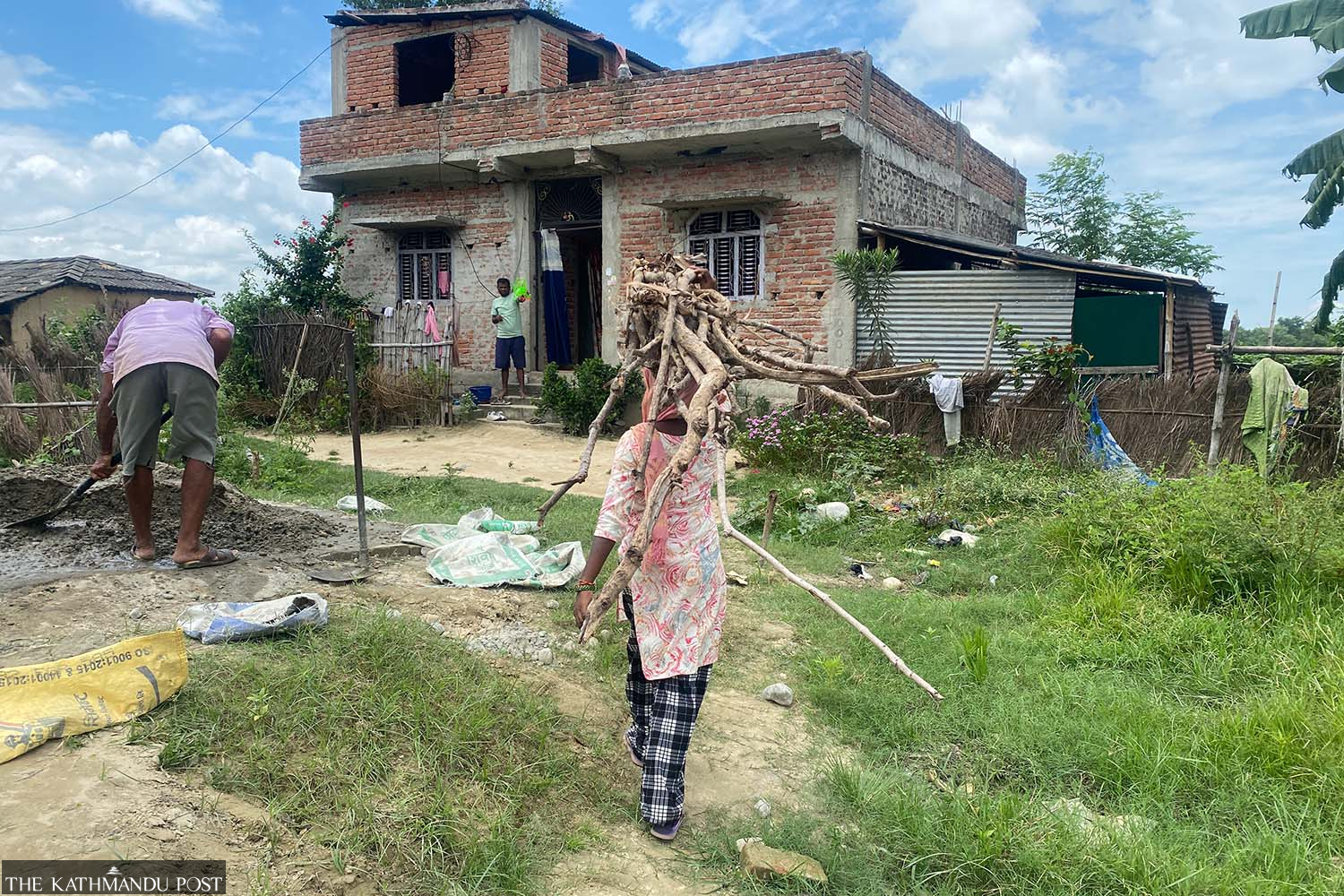
The 2021 national census shows that out of 6.66 million households, 51 percent cook with firewood, while 44.3 percent use LPG. Only 0.5 percent use electricity, 2.9 percent rely on dung cakes, 1.2 percent on biogas, and 0.1 percent on kerosene or other fuels.
Ganeshman Charnath Municipality’s deputy mayor Tulsa Kumari Pandey knows these numbers too well. “Women suffered the most because smoke is the silent killer,” she says. Nearly 70 percent of households in her municipality rely on firewood or dung cakes.
Pandey remembers those days herself. “We regularly hold health camps, and the most common complaints are eye, lung, and uterus problems. Burning dung cake is even worse,” she says. “Imagine cooking in 42-degree heat with a smoky fire—that’s torture.”
That is why her municipality launched an ambitious scheme to distribute induction stoves, supported by the governments of Nepal and Norway, with technical assistance from the Asian Development Bank (ADB).
“This is a pilot scheme, but the feedback has been good,” says Lachana Shresthacharya, ADB’s technical assistance coordinator. “Women now have cleaner homes, better health, and more time for other work. It has even supported local entrepreneurship and improved living standards.”
Still, tradition and misconceptions remain hurdles.
“People think induction stoves give electric shocks, which is not true,” Pandey says. “But we are determined. Our goal is 5,000 households in two years. So far, we’ve reached 1,100." ATEC, as a company, provides a 5-litre pressure cooker with a double burner induction stove and a 260mm hard anodised wok with a single burner. In addition, the municipality provides a 3-litre pressure cooker.
Her municipality also became the first in Nepal to adopt a Renewable Energy Policy last fiscal year.
Yet, not everyone can give up firewood completely.
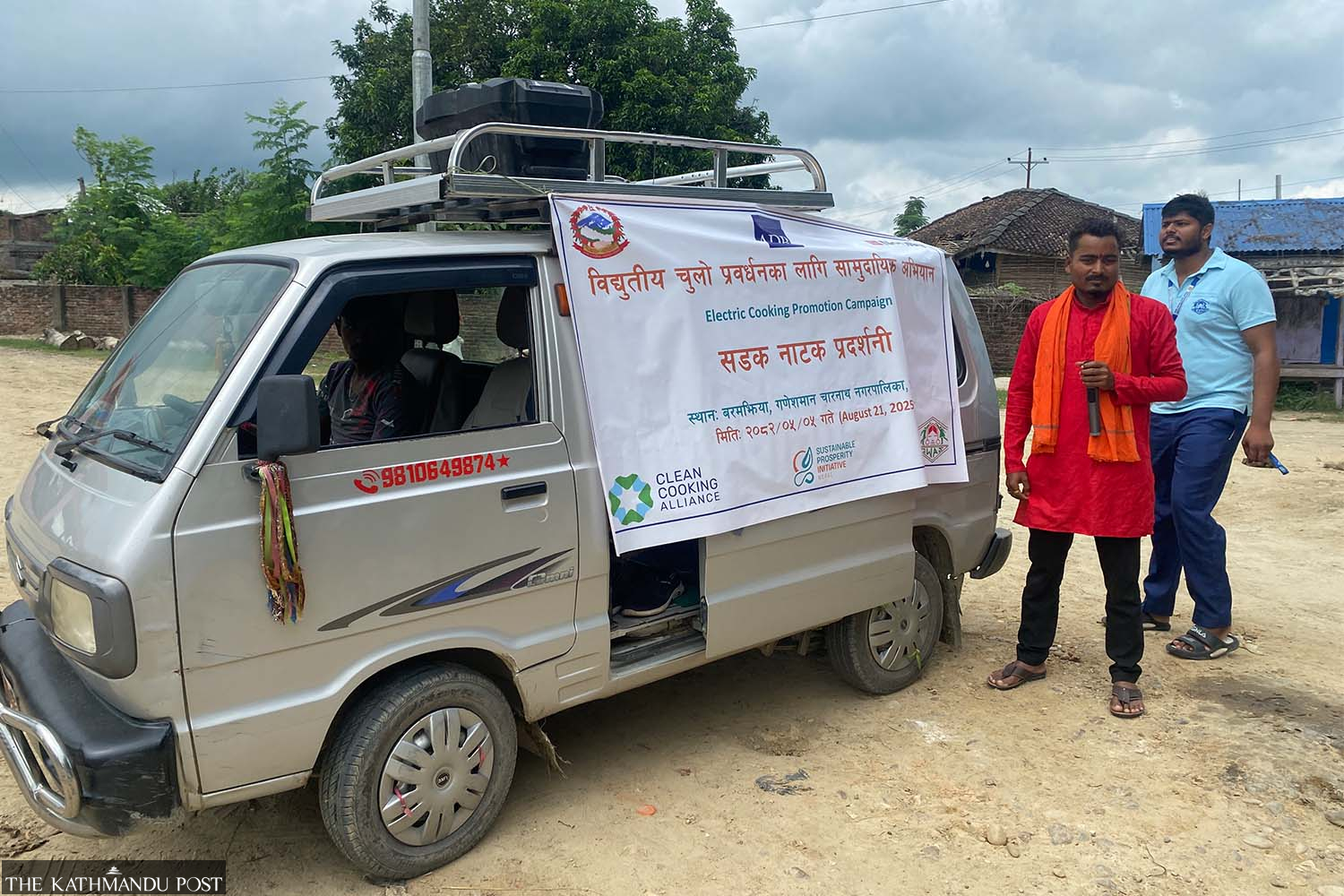
Fifty-two-year-old Chula Mahara, who keeps nine goats, cooks fodder on a mud stove every morning. “The fodder pot is too big for induction,” he says. He once had 35 cows, but sold most due to a lack of manpower as young people migrated abroad. “But we use an electric stove to cook rice, curry, tea and other snacks.”
He still has not removed the mud stove--consisting of two pot holes where fuelwood or cow dung is fed--with raised lumps, in front of his house. Many others follow suit.
For many, cost is the deciding factor. The modern “eCook” induction stove, produced by ATEC Global, costs $162 for a single burner and $270 for a double burner in the global market. However, through subsidies, households in Dhanusha can buy a single or a double burner eCook stove for Rs2,500 and Rs4,900, respectively.
ATEC Global and myclimate, a leader in financing carbon offset projects, have commenced a phase 1 project of 112,500 tonnes of 100 percent data-auditable carbon credits with their eCook Internet of Things (IoT) product in Nepal. IoT refers to the collective network of connected devices and the technology that facilitates communication between devices and the cloud, as well as between the devices themselves. The eCook stoves use a mobile data SIM connected to an IoT server that automatically mints Gold Standard-certified carbon credits.
What makes the eCook unique is its technology. Equipped with a mobile SIM, it connects to an IoT server, and the usage is automatically calculated and converted into valuable carbon credits. The Gold Standard is an international, independent carbon crediting programme. Most projects are in developing, low- and middle-income countries.
This clean cooking initiative is implemented by United Nations Foundation’s Clean Cooking Alliance with a target to establish sustainable supply chain and strengthen the adoption of electric stoves in Madhesh Province.
Jiwan Sharma Acharya, principal energy specialist at ADB, said, “Our approach involves strengthening of infrastructures and systems that serve the community and ensuring that electricity is used efficiently for their well-being.”
Nepal has targeted one million electric stoves by 2030.
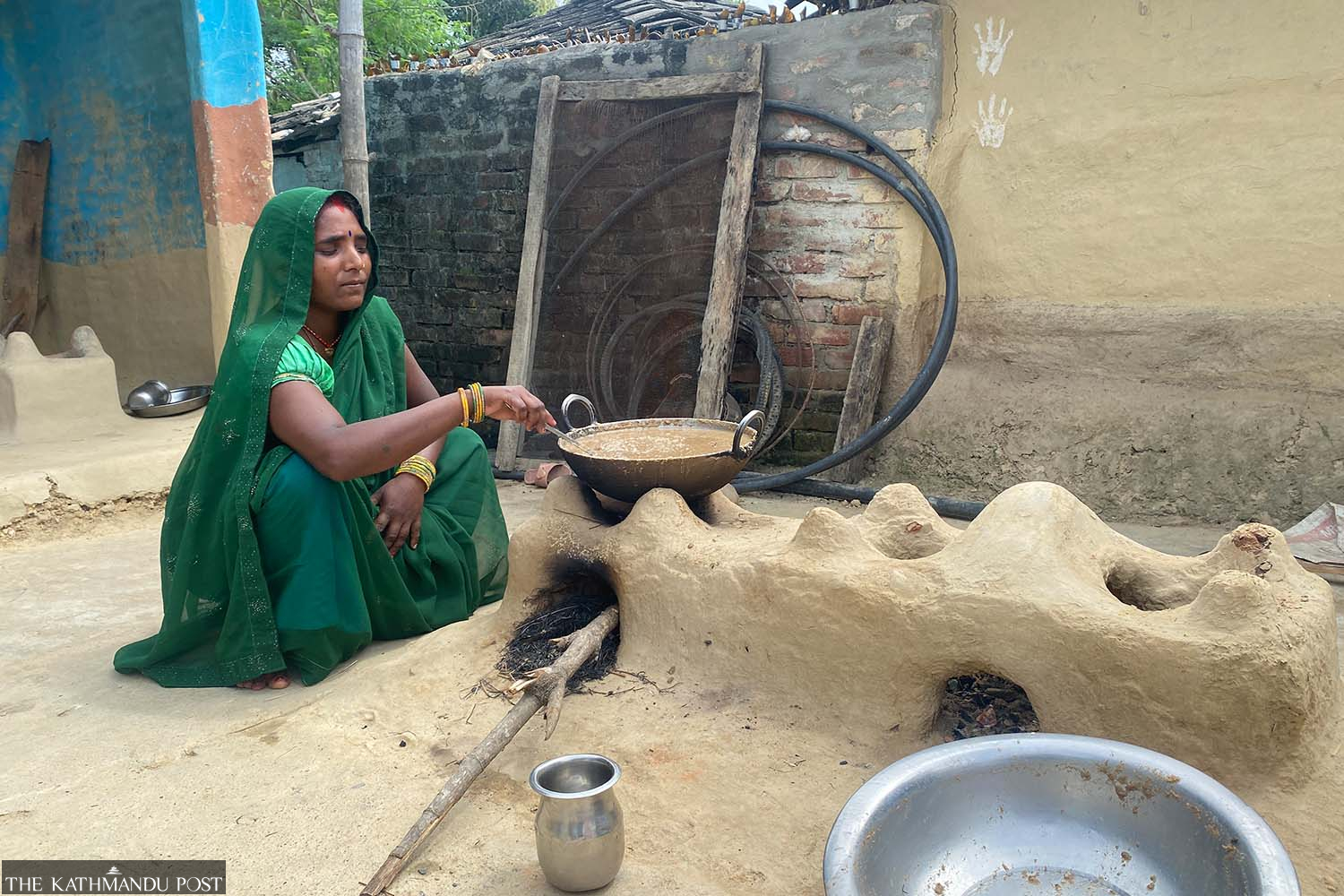
Niraj Shrestha of ATEC’s technology partner says, “Our stoves give cashback—if a user consumes 2kWh and 3kWh electricity on average in a weekly basis. If the users consume 2kWh units of electricity, they get Rs85, and if they consume 3kWh, they get Rs120 back. This encourages households to ditch firewood.”
However, eligibility is strict. To qualify, households must use at least 80 percent firewood and consume above 5 amperes of power. The family members should be four. The induction is reallocated if they don’t use it within 30 days.
“The objective is to motivate the use of more electricity and offset the firewood consumption,” says Shrestha. “The SIM card also detects the use of electricity by any household, and whether it is switched on or not.”
Local vendors have seen steady demand. “From January to May, we sold 20 units a month,” says Bishnu Poudel of Saugat Kitchen Stores in Godar Bazar in Rajbiraj, Saptari district. “Sales slowed during the paddy harvest, but interest is strong.”
People were initially scared, but street dramas and awareness campaigns helped.
The project is supported by the governments of Nepal and Norway, with the Asian Development Bank providing technical assistance.
Lachana Shresthacharya, an ADB consultant and technical assistance coordinator, describes it as a pilot initiative. “So far, the feedback has been encouraging. It keeps homes clean, is safe to use, and protects health,” she says.
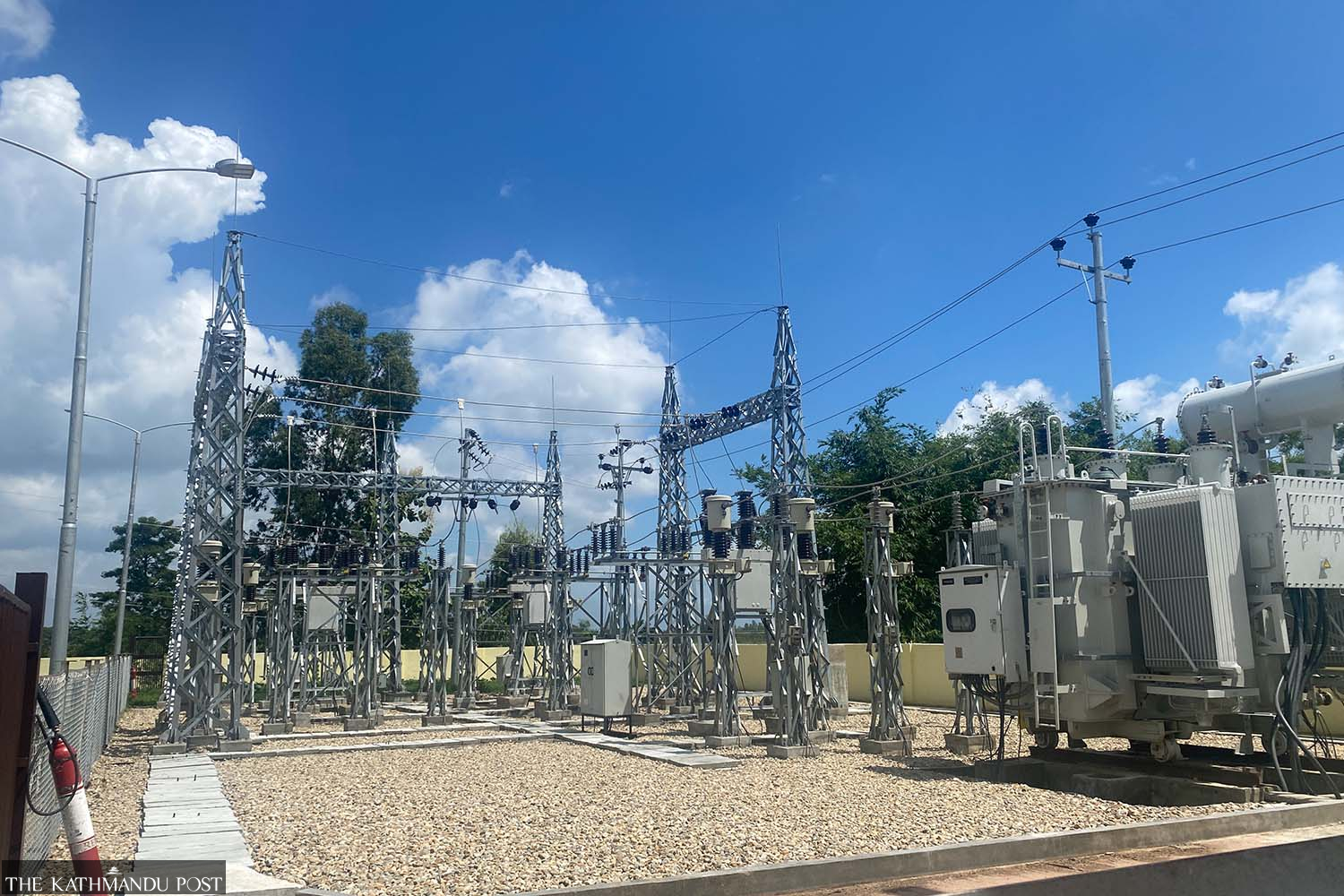
According to Shresthacharya, the project has benefited women in marginalised communities by giving them more time for other activities. “It has also helped local entrepreneurs make better use of electricity, contributing to community-level economic growth and living standards.”
For Madhesh, the biggest obstacle isn’t tradition—it’s electricity. Power cuts, low voltage, and old grids frustrate users. “Load switching of heavy appliances causes voltage fluctuations,” admits Chandha Neupane, director at the Nepal Electricity Authority.
But upgrades are underway. Two of ten new substations along a 33kV double-circuit line meant to stabilise supply are complete, and others are progressing.
The authority plans to boost Madhesh’s consumption to 4,000 MW by 2050, ensuring a reliable supply for households and factories.
Back in Bharatpur, Archana recounts her old stories. She remembers the soot-covered walls, the coughs, the watery eyes, the constant chore of collecting wood. Now, with a single plug, her life has changed.
Her story—and those of her neighbours—signal a quiet revolution in Nepal’s kitchens.
Induction stoves are not just appliances for women long trapped in smoke and drudgery. They are symbols of dignity, health, and hope for a cleaner future.




 5.83°C Kathmandu
5.83°C Kathmandu